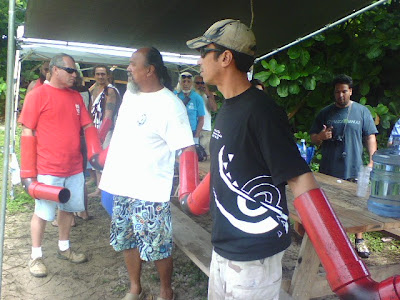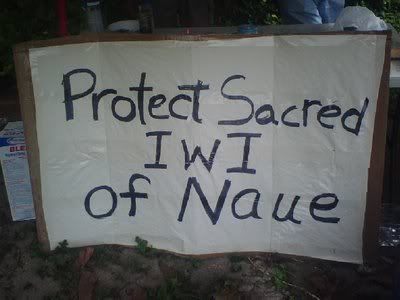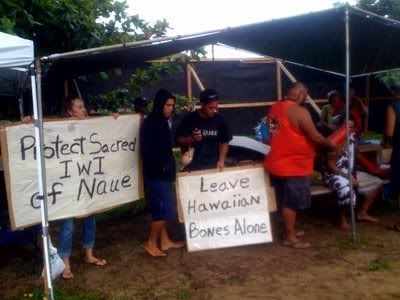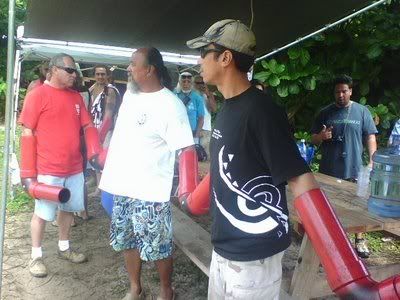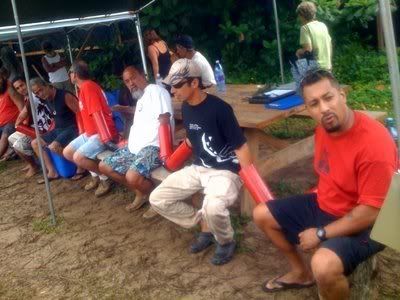Hearings Set For Proposed Iolani Palace RulesHere is the PROBLEMHAWAI'I IS ILLEGALLY OCCUPIED & RULED by USA."SECTION 1. ACKNOWLEDGMENT AND APOLOGY.http://www.hawaiiankingdom.org/apology.shtmlThe Congress -(1) on the occasion of the 100th anniversary of the illegal overthrow of the Kingdom of Hawaii on January 17, 1893, acknowledges the historical significance of this event which resulted in the suppression of the inherent sovereignty of the Native Hawaiian people;(2) recognizes and commends efforts of reconciliation initiated by the State of Hawaii and the United Church of Christ with Native Hawaiians;(3) apologizes to Native Hawaiians on behalf of the people of the United States for the overthrow of the Kingdom of Hawaii on January 17, 1893 with the participation of agents and citizens of the United States, and the deprivation of the rights of Native Hawaiians to self-determination;(4) expresses its commitment to acknowledge the ramifications of the overthrow of the Kingdom of Hawaii, in order to provide a proper foundation for reconciliation between the United States and the Native Hawaiian people; and(5) urges the President of the United States to also acknowledge the ramifications of the overthrow of the Kingdom of Hawaii and to support reconciliation efforts between the United States and the Native Hawaiian people.SEC. 2. DEFINITIONS.As used in this Joint Resolution, the term "Native Hawaiians" means any individual who is a descendent of the aboriginal people who, prior to 1778, occupied and exercised sovereignty in the area that now constitutes the State of Hawaii.SEC. 3. DISCLAIMER.Nothing in this Joint Resolution is intended to serve as a settlement of any claims against the United States.Approved November 23, 1993 "Department of Land and Natural Resources "DLNR " is state run !Hawaii state = USA.The Ones SPEAKING UP and PROTESTING ARE KANAKA MAOLI = HAWAIIANS and PEOPLE who CARE ABOUT HAWAI'I and HAWAI'IANS.Laura H. Thielen = Dingle Lingle's a.k.a.{ ms. SEWERFAIRY } NO "E.I.S."Environmental Impact Statements REGIME = PRO USA , MILITARY and HEAD of DLNR.WHICH HAS TURNED OUR AINA { LAND ,AIR WATER & NATURAL RESOURCES } into a Carnival SideShow Shooting Gallery of OUR LAWS and Programs to Protect Our Aina and the Hawaiian Culture."(4) expresses its commitment to acknowledge the ramifications of the overthrow of the Kingdom of Hawaii, in order to provide a proper foundation for "reconciliation" between the United States and the Native Hawaiian people; "WHERE IN THIS STATEMENT DOES SAY TO CONTINUE TO SCREW THE HAWAIIANS AND THEIR ILLEGALLY OCCUPIED SOVREIGN NEUTRAL NATION !SINCE WHEN DID "RECONCILIATION" MEAN : COLONIAL RULE , RAPING OF RESOURCES and GENOCIDE ?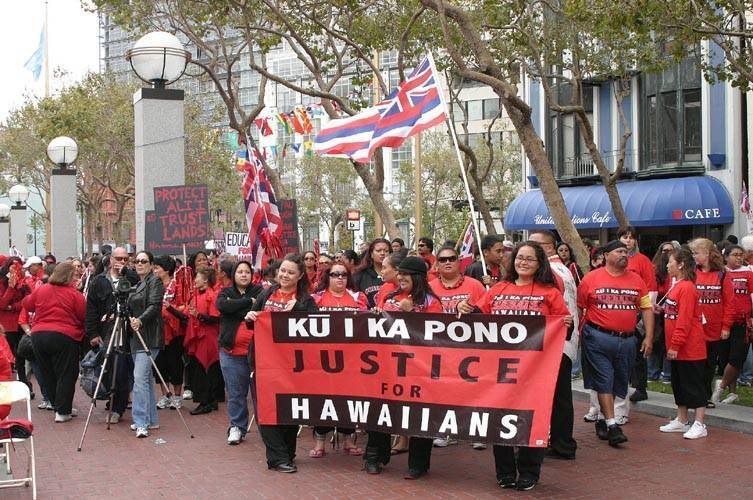
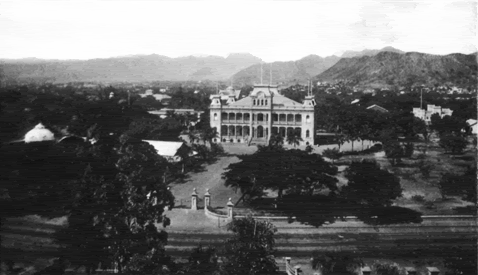
Hearings Set For Proposed Iolani Palace Rules
Advertiser Staff
HONOLULU – The Department of Land and Natural Resources has scheduled a series of statewide hearings to gather input on proposed rule amendments for the use and protection of the 'Iolani Palace State Monument.
'Iolani Monument is one of the most important historical and cultural resources in Hawai'i, and consists of the historic Palace, coronation pavilion, Royal Barracks, Kanaina Building (old Archives) and Kekauluohi Building (modern-day State Archives), as well as the 11 acres of palace grounds, perimeter wall and wrought iron fence, DLNR officials said.
"The State is proposing to establish new administrative rules for 'Iolani Palace State Monument that will help protect and preserve the historic and cultural significance of this important piece of Hawai'i's history and heritage for future generations; and meet the Monument's education mission to preserve the character of Hawai'i's monarchy era," said Laura H. Thielen, DLNR chairperson.
"We invite all interested individuals to attend a public hearing to present relevant information and opinions for the DLNR to consider," Thielen said.
Meetings will begin at 6:30 p.m. except on Lana'i where the meeting begins at 5 p.m. The schedule is as follows:
• Moloka'i – Tues., Aug. 12, Kaunakakai Elementary School cafeteria, 30 Ailoa St., Kaunakakai.
• Lana'i – Tues., Aug. 12, 5 p.m., Lana'i High and Elementary School, room L16, 555 Fraser Ave. Lana'i City.
• O'ahu – Wed., Aug. 13, DLNR Board room 132, 1151 Punchbowl St., Honolulu.
"KU I KA PONO"
THEY TRAMPLE ,DESTROY and BUILD on OUR SACRED BURIAL SITES .
 52 or more burials of our family on 10,000 sq ft. where will the house be built !
52 or more burials of our family on 10,000 sq ft. where will the house be built !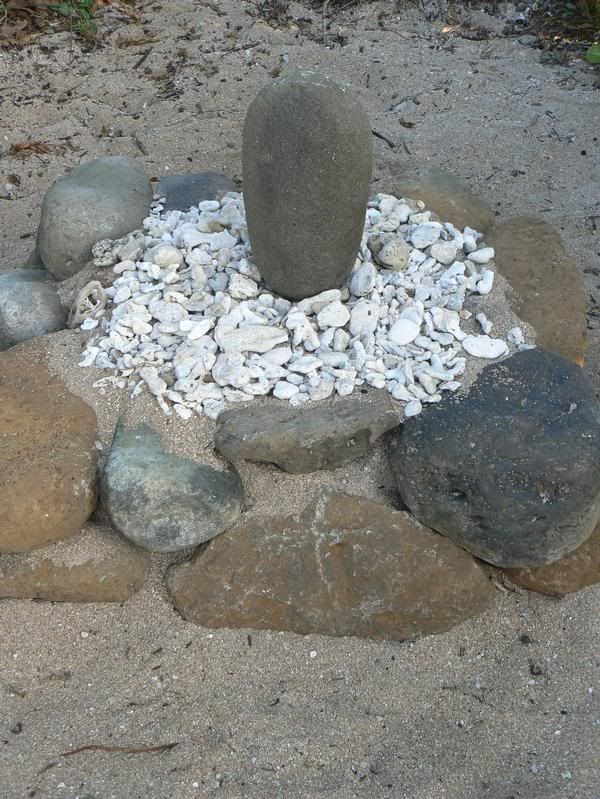
 http://www.hawaiiankingdom.org/Pono KealohaKanaka Maoli............................................................................................................................HPACH Testimony on DLNR: Iolani Palace State Monument Restrictions, OPPOSEAugust 13, 2008Department of Land and Natural ResourcesState of HawaiiSubject: Iolani Palace State Monument Restrictions, OPPOSEALOHA Kakou,My name is Richard Pomaikaiokalani Kinney. On January 15, 1993 by State Notary Public document attached to this testimony, I renounced my citizenship to the United States. I am testifying today as a Hawaiian Nationalist of the Hawaiian Kingdom. Whose lawful government was overthrown by the diplomatic and military forces of the United States on January 17, 1893.I strongly OPPOSE the passage into law the “Iolani Palace State Monument Restrictions.”On January 31, 2008 the Hawaii Supreme Court ruled that Native Hawaiians have a claim to the Public Trust Lands of Hawaii. The Hawaii Supreme Court ruling was based on the findings of Public Law 103-150. Signed into law by President William Clinton on November 23, 1993.In part Public Law 103-150 recognized that “the indigenous Hawaiian people never directly relinquished their claims to their inherent sovereignty as a people or over their national lands to the United States, either through their monarchy or through a plebiscite or referendum.”The entire grounds of Iolani Palace are one of the two most scared national lands of the the indigenous Hawaiian people. The other being the lands of the Royal Mausoleum in Nuuanu.The State of Hawaii and its governmental entities including the DLNR has no lawful jurisdiction to control, enforce or deny the indigenous Hawaiian people of their inherent sovereign right to freely access the grounds of Iolani Palace.As holders of the Sovereignty that is cited in Ua Mau Ke Ea O Ka Aina I Ka Pono, it is the indigenous Hawaiian people who are the Sovereigns of Hawaii. It is the indigenous Hawaiian people who lawfully hold the Sovereignty over Hawaii. Not the State of Hawaii or DLNR. You may hold the Weapons of Massive Destruction, but not the Sovereignty!Page 2August 13, 2008DLNRFor many years, perhaps over 30 years in the pass I have gathered many times on the grounds of Iolani Palace. Never have I seen any indigenous Hawaiian conduct themselves that warrants the proposed “Iolani Palace State Monument restrictions.”The rights of the indigenous Hawaiian people are separate and independent of the general public. In September 2007 the United Nationsadopted the “Declaration on the Rights of the Indigenous Peoples.” I highly recommend that the Director and members of the DLNR immediately read the Declaration on the Rights of the Indigenous Peoples.I believe that including the indigenous Hawaiian people into the rights of the general public is a very serious intent violation of the United Nations’ Declaration.Mahalo nui for the opportunity to present my testimony on this very important issue. Once more I strongly OPPOSE the passage into law the Iolani Palace State Monument restrictions.It is said that some times wrongful laws needs to be tested with civil disobedience. The inherent sovereignty of the indigenous Hawaiian people is pono. He Hawaii Au.Attachment: HPACHNotary Public, First Judicial CircuitState of Hawaii, January 15, 1993ALOHA KUU AINA HAWAIIRichard Pomaikaiokalani Kinney, SOVEREIGNHawaiian Political Action Council of Hawaii87-168 Maaloa StreetWaianae, Hawaii, 96792
http://www.hawaiiankingdom.org/Pono KealohaKanaka Maoli............................................................................................................................HPACH Testimony on DLNR: Iolani Palace State Monument Restrictions, OPPOSEAugust 13, 2008Department of Land and Natural ResourcesState of HawaiiSubject: Iolani Palace State Monument Restrictions, OPPOSEALOHA Kakou,My name is Richard Pomaikaiokalani Kinney. On January 15, 1993 by State Notary Public document attached to this testimony, I renounced my citizenship to the United States. I am testifying today as a Hawaiian Nationalist of the Hawaiian Kingdom. Whose lawful government was overthrown by the diplomatic and military forces of the United States on January 17, 1893.I strongly OPPOSE the passage into law the “Iolani Palace State Monument Restrictions.”On January 31, 2008 the Hawaii Supreme Court ruled that Native Hawaiians have a claim to the Public Trust Lands of Hawaii. The Hawaii Supreme Court ruling was based on the findings of Public Law 103-150. Signed into law by President William Clinton on November 23, 1993.In part Public Law 103-150 recognized that “the indigenous Hawaiian people never directly relinquished their claims to their inherent sovereignty as a people or over their national lands to the United States, either through their monarchy or through a plebiscite or referendum.”The entire grounds of Iolani Palace are one of the two most scared national lands of the the indigenous Hawaiian people. The other being the lands of the Royal Mausoleum in Nuuanu.The State of Hawaii and its governmental entities including the DLNR has no lawful jurisdiction to control, enforce or deny the indigenous Hawaiian people of their inherent sovereign right to freely access the grounds of Iolani Palace.As holders of the Sovereignty that is cited in Ua Mau Ke Ea O Ka Aina I Ka Pono, it is the indigenous Hawaiian people who are the Sovereigns of Hawaii. It is the indigenous Hawaiian people who lawfully hold the Sovereignty over Hawaii. Not the State of Hawaii or DLNR. You may hold the Weapons of Massive Destruction, but not the Sovereignty!Page 2August 13, 2008DLNRFor many years, perhaps over 30 years in the pass I have gathered many times on the grounds of Iolani Palace. Never have I seen any indigenous Hawaiian conduct themselves that warrants the proposed “Iolani Palace State Monument restrictions.”The rights of the indigenous Hawaiian people are separate and independent of the general public. In September 2007 the United Nationsadopted the “Declaration on the Rights of the Indigenous Peoples.” I highly recommend that the Director and members of the DLNR immediately read the Declaration on the Rights of the Indigenous Peoples.I believe that including the indigenous Hawaiian people into the rights of the general public is a very serious intent violation of the United Nations’ Declaration.Mahalo nui for the opportunity to present my testimony on this very important issue. Once more I strongly OPPOSE the passage into law the Iolani Palace State Monument restrictions.It is said that some times wrongful laws needs to be tested with civil disobedience. The inherent sovereignty of the indigenous Hawaiian people is pono. He Hawaii Au.Attachment: HPACHNotary Public, First Judicial CircuitState of Hawaii, January 15, 1993ALOHA KUU AINA HAWAIIRichard Pomaikaiokalani Kinney, SOVEREIGNHawaiian Political Action Council of Hawaii87-168 Maaloa StreetWaianae, Hawaii, 96792
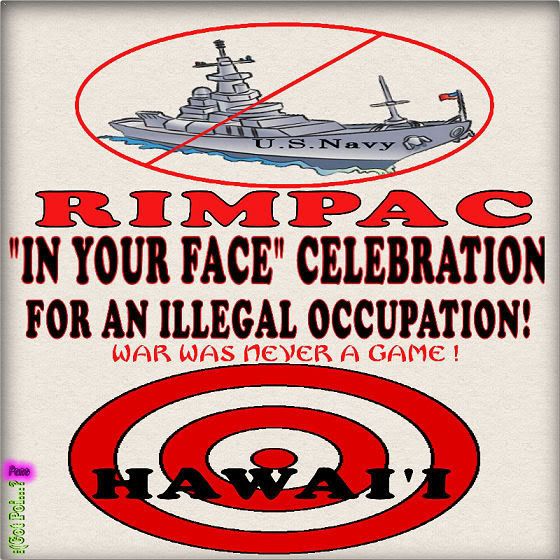 What a Fricken Joke, After RIMPAC and untold DAMAGE DONE TO MARINE LIFE..WHO'S THE WATCH DOG ? the NAVY ..!USA , OCCUPYING and DESTROYING HAWAI'I ILLEGALLY IN WORLD COURT LAWS ! PROOF THAT FORCE & BULLYING TACTICS work for those who have the POWER.Case and Point "IRAQ" WITH OVER 1 MILLION SLAUGHTERD and MILLIONS DISPACED THEIR NATION POISONED WITH DEPETED URANIUM WITH A LIFE TIME OF 7 BILLION YEARS ,who had NOTHING TO DO WITH 911 !http://www.honoluluadvertiser.com/apps/pbcs.dll/article?AID=/20080812/BREAKING/80812052Updated at 1:56 p.m., Tuesday, August 12, 2008Navy agrees to limit use of some sonar systemsRead comments (1)RecommendPrint this pageE-mail this articleBy MARCUS WOHLSENAssociated PressSAN FRANCISCO — The U.S. Navy agreed in a settlement approved Tuesday to limit where it operates certain sonar systems criticized by environmentalists as a threat to whales and other marine mammals.The settlement approved Tuesday by a federal judge in San Francisco restricts the Navy's use of low-frequency sonar to specific military training areas near Hawaii and in the western Pacific Ocean."Today's agreement maintains the Navy's ability to test and train while shielding whales and other vulnerable species from harmful underwater noise," said Michael Jasny, a policy analyst with the Natural Resources Defense Council, the lead plaintiff in the case.In February, U.S. Magistrate Elizabeth Laporte found that low-frequency sonar blasted beneath the ocean's surface to detect submarines threatens the animals' ability to find food and avoid predators.A lawsuit filed by conservation groups last year argued that regulators violated multiple federal environmental laws by issuing a permit allowing the Navy to use the sonar systems around the world.Environmentalists argued that the extremely loud, low-pitch sounds used to detect submarines at great distances disrupted the behavior of whales hundreds of miles away.In a separate case, the Navy is asking the U.S. Supreme Court to reconsider a federal appeals court ruling limiting the use of mid-frequency sonar in training exercises off Southern California's coast.The Navy argues that the decision by the 9th U.S. Circuit Court of Appeals in San Francisco threatens the readiness of sailors and Marines while providing limited environmental benefit.http://www.hawaiiankingdom.org/
What a Fricken Joke, After RIMPAC and untold DAMAGE DONE TO MARINE LIFE..WHO'S THE WATCH DOG ? the NAVY ..!USA , OCCUPYING and DESTROYING HAWAI'I ILLEGALLY IN WORLD COURT LAWS ! PROOF THAT FORCE & BULLYING TACTICS work for those who have the POWER.Case and Point "IRAQ" WITH OVER 1 MILLION SLAUGHTERD and MILLIONS DISPACED THEIR NATION POISONED WITH DEPETED URANIUM WITH A LIFE TIME OF 7 BILLION YEARS ,who had NOTHING TO DO WITH 911 !http://www.honoluluadvertiser.com/apps/pbcs.dll/article?AID=/20080812/BREAKING/80812052Updated at 1:56 p.m., Tuesday, August 12, 2008Navy agrees to limit use of some sonar systemsRead comments (1)RecommendPrint this pageE-mail this articleBy MARCUS WOHLSENAssociated PressSAN FRANCISCO — The U.S. Navy agreed in a settlement approved Tuesday to limit where it operates certain sonar systems criticized by environmentalists as a threat to whales and other marine mammals.The settlement approved Tuesday by a federal judge in San Francisco restricts the Navy's use of low-frequency sonar to specific military training areas near Hawaii and in the western Pacific Ocean."Today's agreement maintains the Navy's ability to test and train while shielding whales and other vulnerable species from harmful underwater noise," said Michael Jasny, a policy analyst with the Natural Resources Defense Council, the lead plaintiff in the case.In February, U.S. Magistrate Elizabeth Laporte found that low-frequency sonar blasted beneath the ocean's surface to detect submarines threatens the animals' ability to find food and avoid predators.A lawsuit filed by conservation groups last year argued that regulators violated multiple federal environmental laws by issuing a permit allowing the Navy to use the sonar systems around the world.Environmentalists argued that the extremely loud, low-pitch sounds used to detect submarines at great distances disrupted the behavior of whales hundreds of miles away.In a separate case, the Navy is asking the U.S. Supreme Court to reconsider a federal appeals court ruling limiting the use of mid-frequency sonar in training exercises off Southern California's coast.The Navy argues that the decision by the 9th U.S. Circuit Court of Appeals in San Francisco threatens the readiness of sailors and Marines while providing limited environmental benefit.http://www.hawaiiankingdom.org/





 52 or more burials of our family on 10,000 sq ft. where will the house be built !
52 or more burials of our family on 10,000 sq ft. where will the house be built !









